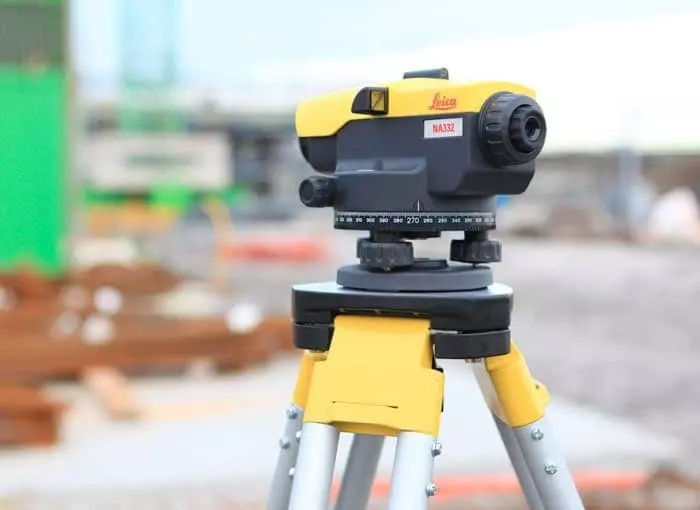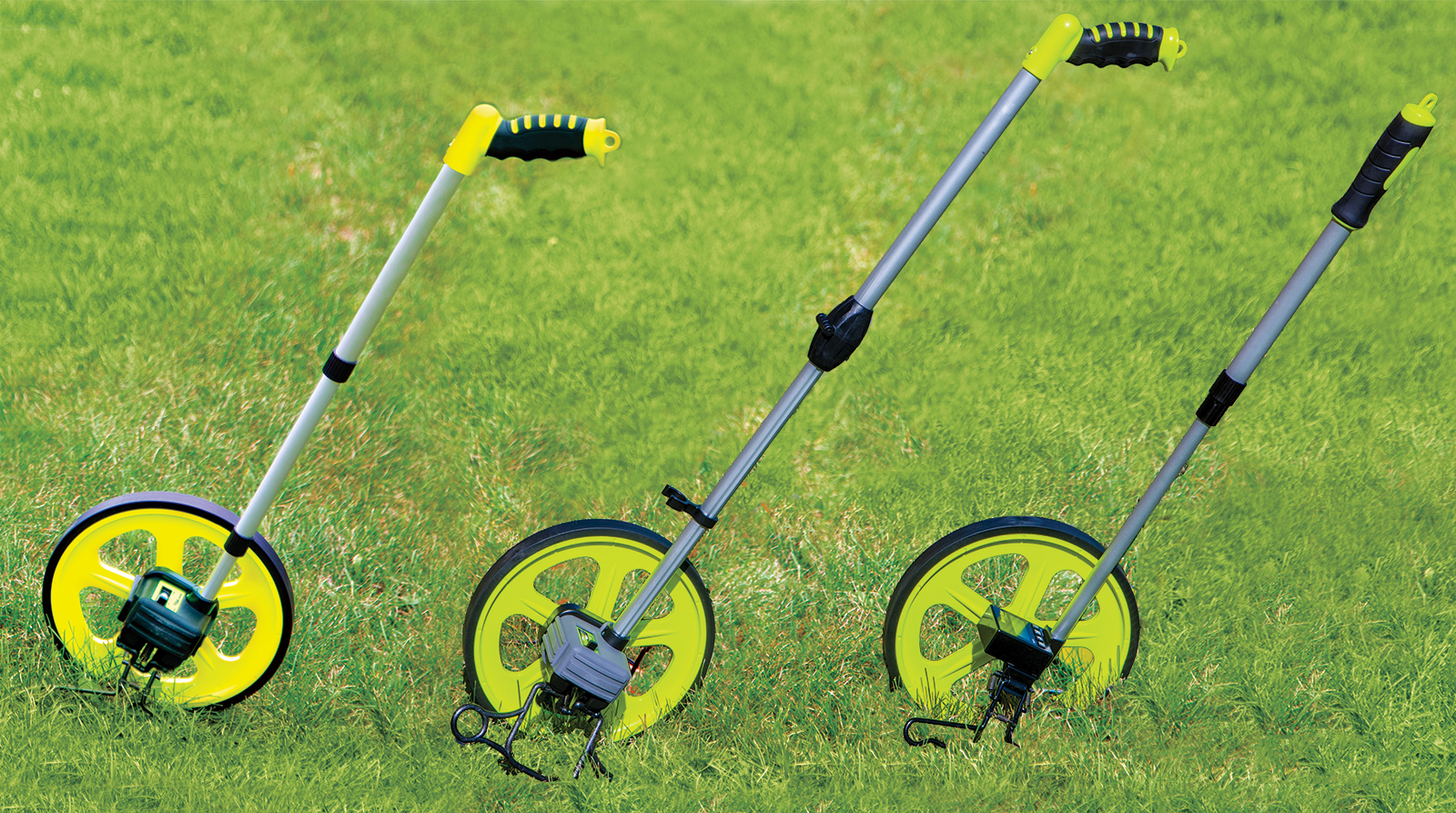While transit and optical levels can be used for the same general purpose, their specific features are different. Both levels are are tools used typically by surveyors to make measurements about land elevations. The optical level is preferred for more simple tasks with fewer details, and the transit level is ideal when more than just land elevation information is required. Learn more about the difference between the transit and optical levels and determine which one is right for the job.

Optical Levels
Commonly seen on the side of the road, in fields, or pointing toward house framing, optical levels are surveying tools used to establish and verify specific points on the same horizontal plane, also known as leveling.
Best Application
Surveyors use optical levels for measuring, building, leveling, and grading. While these applications can be made with transit levels, an optical level’s simplicity for basic measurements is often preferred.
- Land elevations
- Building heights
- Drain grades
- Landscaping
- Profiling
How To Use
For best results, set up as close to the area where the grade wth be measured as possible. While only one person needs to set up the optical level, two people will need to make measurements; one will hold the grade stick, and the other will operate the level and record measurements.
Tips
Before you shop, it is essential to know the three different kinds of optical levels.
Automatic Level
This type of optical level comprises mirrors and prisms with a wire and pendulum set up that it self-corrects to ensure total levelness.
Tilting Level
These levels do not have the axis mounted to the telescope portion but instead can be tilted slightly.
Dumpy Level
The dumpy level is attached with three leveling screws and a spirit level to ensure the vertical axis and horizontal sight line provide accurate staff readings.
Transit Levels
Like its less technological counterpart, a transit level is a surveying tool used for building, grading, and determining the relative position of objects, lines, and angles. Transit levels can turn to the side to make vertical measurements, unlike the optical level that can only be used horizontally.
Best Application
Transit levels are used primarily for their 360-degree capabilities of measurement in surveying. Since the transit has a swivel in the middle of its base, it can establish a perfect line, whereas the optical level cannot. This option measures vertical lines and angles and distances between parallel points.
How To Use
The tripod setup is similar to the optical level. However, once the transit level is attached to the tripod’s top, be sure to include a sunshade for best results. Move as close as you can to the area you are surveying. Focus by using an object in the distance and turning the eyepiece. Once the sightline is created through the telescope, it will still take two people to establish the level grade line.
Tips
Remember that when a transit level is locked into place on the tripod, it can only move vertically rather than fully with its 360-degree capabilities.
To shop for both optical and transit levels to get the job done quickly and effectively, shop the selection of levels available at Engineer Supply.

Melissa Day is a dedicated home blogger who has been blogging for over six years. She covers everything home related. Melissa also loves writing posts about her travels to Europe with her husband and two children.












